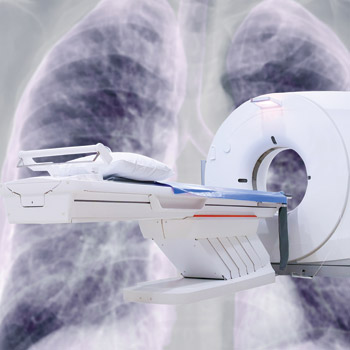Cardiac rehab uptake remains low, despite benefits
Estimates from the American Heart Association suggest that only about 20% to 30% of eligible patients ever receive the intervention.
Strong evidence shows that cardiac rehabilitation following a cardiovascular event or surgery reduces mortality and lowers hospital readmissions, but estimates from the American Heart Association suggest that only about 20% to 30% of eligible patients ever receive the intervention.
“One of the challenges to increasing the use of cardiac rehab is that the benefits are underappreciated both by the public and the medical community,” said Tasnim F. Imran, MD, MPH, a cardiologist at the Lifespan Cardiovascular Institute and the Providence VA Medical Center and an assistant professor of medicine at the Warren Alpert Medical School of Brown University in Providence, R.I. “In some studies, researchers have found up to 34% reduction in mortality. It's something that's just as effective as any medication we would consider.”

Other hurdles that make it easier for referrals to be overlooked include lack of insurance coverage, inability to travel to a facility, and patient inertia, experts said. The groups that are often left behind are women, individuals of a lower socioeconomic status, African Americans, and the elderly, Dr. Imran noted: “those groups we know clinically are at significantly higher risk of dying within the first five years of having a first myocardial infarction.”
Eligibility
The American Heart Association recommends cardiac rehab for patients who have had a myocardial infarction within 12 months, percutaneous coronary intervention (PCI), coronary artery bypass grafting (CABG), chronic stable angina, stable chronic heart failure, cardiac transplantation, a heart valve repair or replacement, or a coronary angioplasty or stent. It's covered by most private insurance companies and Medicare, with one caveat: Medicare coverage for heart failure includes only patients with reduced ejection fraction.
For those who experience a cardiac event or undergo surgery, cardiac rehab typically begins in the hospital setting with a referral to continue in an outpatient rehab program. The process for referrals varies by hospital and center, but referrals are usually made by the cardiologist or the hospitalist. Right from the start, patients can slip through the cracks, explained ACP Member Mitesh S. Patel, MD, MBA, vice president of clinical transformation and national lead for behavioral insights at Ascension Health in Philadelphia. It can be a “manual and tedious” process just to figure out which patients are eligible, he said. From there, a clinician needs to remember to order cardiac rehab, and someone, either a clinician or a case manager, should talk to the patient about why it's important, he said.
Dr. Patel, who is currently on leave from the University of Pennsylvania's Perelman School of Medicine, was part of a research team there that looked at whether it would be beneficial to make the referral process automatic, allowing physicians to opt out patients for whom rehab wasn't appropriate rather than opting patients in.
The study, published Jan. 14, 2021, by JAMA Network Open, examined changes in cardiac rehab referral in the two years after automated electronic health record (EHR) technology was used to identify eligible patients and an opt-out functionality was implemented. The researchers compared referral patterns from the hospital that adopted the opt-out approach with two control hospitals. Overall, the intervention hospital had a cardiac referral rate of 85.7% at the end of the study, compared with 31.6% at the control hospitals.
The technology is easy to integrate, said Dr. Patel, adding that the team has worked with other hospitals to help establish eligibility criteria and code them into the EHRs. The next step is to ensure that patients who get referrals also receive counseling about the importance of cardiac rehab, he said. For some hospitals, that may mean dedicating a staff member to have those conversations.
“In a lot of health systems, it's not clear whose role this is,” Dr. Patel said. “Just those simple things of assigning responsibilities, planning ahead and being proactive as opposed to reactive, can really go a long way in increasing cardiac rehab. That's something that all health systems could start doing today.”
Medically complex patients
While most patients will be referred to cardiac rehab from the hospital, community-based internists also play a role. This is especially true for medically complex patients with heart failure, said Tara Lagu, MD, MPH, FACP, director of the Institute for Public Health and Medicine at Northwestern University School of Medicine in Chicago.
“For internists and those who take care of patients with heart failure, it is not as obvious a referral,” she said. “We tend to think of the patient as being debilitated and sick and overwhelmed and exhausted and breathless. There are a lot of barriers to sending people with heart failure to cardiac rehab.”
Heart failure patients are the least likely to enroll in cardiac rehab, Dr. Lagu said, in part because Medicare's policy limiting eligibility to reduced ejection fraction excludes many patients who could benefit. Another issue is that Medicare requires a six-week waiting period following a hospitalization before heart failure patients can access cardiac rehab. Although this waiting period was intended to ensure that patients are “stable” prior to attending, Dr. Lagu said that, in practice, it means that patients who are frequently hospitalized are unlikely to ever become eligible to attend.
“There are studies that are attempting to examine how to better stabilize patients with heart failure after hospitalization, including some that use cardiac-focused physical therapy after discharge,” she said. “However, as long as payers, and not physicians, determine the ‘right’ waiting period for patients with heart failure, there is a group of patients with heart failure who will never get the chance to attend cardiac rehab.”
Dr. Lagu suggested that one way to increase use of cardiac rehab in heart failure is for primary care physicians to begin to consider heart failure patients for rehab when they are beginning to show daily symptoms. For example, if a patient is experiencing a chronic decline and the physician is considering increasing diuretics, it might also be the time to consider a referral to cardiac rehab, she said.
“I think a lot of internists are experiencing a burden of all the needs for patients with heart failure with reduced ejection fraction,” Dr. Lagu said. “Starting guideline-directed medical therapy, referring the patient to a cardiologist, and addressing the social and family needs of a patient with chronic illness are just a few of the interactions happening during the very brief medical visit. Cardiac rehab referral is often lost in the shuffle, or primary care physicians might not be aware that the patient is probably eligible, but cardiac rehab might be just the intervention needed to keep the patient functional and out of the hospital.”
Primary care physicians can also provide education and encouragement, said Quinn R. Pack, MD, an associate professor of medicine at the Baystate Medical Center in Springfield, Mass., and a cardiologist who directs the cardiac rehab program.
“What you say about cardiac rehab is a major predictor of whether patients show up or not,” Dr. Pack said. “Rather than do the counseling yourself, it's critical that what you do is encourage patients to enroll in cardiac rehab.” He noted that verbal encouragement from a primary care physician emphasizing that cardiac rehab can prevent another cardiac event is critical.
Dr. Patel agreed. “Many times, patients won't follow up with their cardiologist, but they'll follow up with their primary care doctor who they have known for 20 years, so I do think that is an opportunity,” he said.
Innovations in adherence
Once patients start cardiac rehab, they need to stay engaged. Cardiac rehab can be intense and scary for patients, especially those with heart failure who get breathless with any amount of exercise, Dr. Lagu said.
Dr. Imran and colleagues recently studied the effects of a mobile app on cardiac rehab retention at Boston Medical Center and published their findings in the Aug. 3, 2021, Journal of the American Heart Association. The app provided individualized educational content that progressed as patients moved through the program and used patients' smartphone accelerometers to provide daily step counts and heart rate information. The app also allowed two-way messaging between patients and program staff.
At the end of the intervention, Dr. Imran and her colleagues found that patients who used the app attended a higher number of prescribed sessions and were 1.8 times more likely to complete the rehab program than patients who did not. Randomized trials are needed to determine the long-term outcomes, but Dr. Imran said the study provides a proof of concept that mobile apps can help engage patients. “We certainly know that improving adherence with cardiac rehab itself is associated with improved mortality and reduced morbidity in patients with cardiovascular disease,” she said.
While the COVID-19 pandemic shuttered some rehab facilities early on and continues to reduce capacity at many sites, it also sparked innovations around virtual programs. COVID-19 has accelerated digital adoption by physicians and patients that would have otherwise taken years, Dr. Patel said. “Not only are health systems and cardiac rehab programs more equipped to reach out to patients through these channels—we now are regularly texting with our patients, which we weren't doing two years ago—but patients are more amenable to that.”
It's also been an opportunity for fully virtual and hybrid programs to show they can be cost-effective and comparable in terms of safety and efficacy, Dr. Imran said.
While the Medicare policy change that allowed cardiac rehab facilities to provide virtual services is set to expire at the end of 2022, Dr. Lagu said programs should be allowed to provide services virtually on a permanent basis. “COVID-19 has really invigorated the virtual possibilities,” she said. “There are people around the country who are studying how to best do virtual cardiac rehab. I think we need to keep working on that.”




